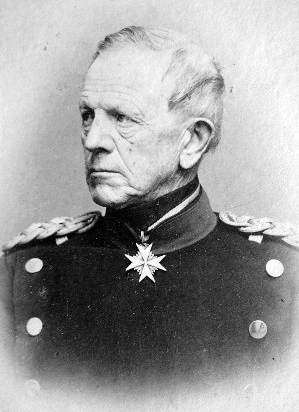
“No plan ever survives first contact with the enemy.” – Helmuth von Moltke the Elder
In the case of this article ‘enemy’ is a metaphor. Closing the allegory of the catering event, perhaps the ‘enemy’ is the mother in law, tyrannical matriarch of our fictional outdoor wedding in our unnamed state park.
It may seem counterintuitive to start an article about ‘completing the plan’ with a quote that implies all plans are predestined failure. The quote actually means, roughly: [stuff] happens and things change, adapt or fail.

Invariably, the leader that completes a deliberate planning process and gives team members a clear vision of the mission will be successful…even after first contact.
Once you make a tentative plan, initiate movement and reconnoiter the catering site you are ready to complete the plan. By issuing a warning order you’ve helped team members understand the end state and what needs to be done. By drafting a tentative plan you have created a framework for the entire catering event. By initiating movement your subordinate team members can begin getting their piece of the big picture into position. Reconnaissance has painted the set and given the event its logistical limits.
Completing the plan is the leader’s deliberate process in bringer all this together. What has been completed, what needs to be finished, what needs to be started and who’s to be in charge?
The total plan, or order, needs to address five things: Overall situation, assignment, implementation, logistics and communications.
Overall situation is a summary that helps team members understand what you learned during recon. Talk about weather – are we working in the rain? – and terrain. Talk about the ‘enemy’: “By the way, the mother of the bride wants the entrée changed to chicken breast instead of pulled pork, even though we already smoked the loin.” Include partnership, maybe you have subcontracted part of the meal to a local company that specializes in potato salad or hired additional wait staff from the community college.
Assignment is a repeat of the five W’s first broached during the warning order. Make updates as appropriate. Be sure to include the specific time, date and location of the event.
Implementation is the meat and potatoes of and includes specific tasks to specific team members and specific times with specific end-states. You also need to address how team members are too arrive at the event site and which subordinate leaders have responsibility for various parts of the overall plan.
Logistics outlines every resource that is available and required for the success of each specified task. From which trailer will carry the tent to where the potato salad subcontractor is located. It also outlines back-ups – if the warmers run dry how are you going to keep the chicken breast from going cold.
Communications is as easy as it is important as it is complicated. Don’t rely on text messaging. Provide team members with a clear, two-way, process for communication and be sure to receive acknowledgement for any and all changes. Express last-minute changes in person, preferably with all team members present.

The final Troop Leading Procedure (TLP) is Supervise. As a leader, you know that, the job of leading is never done. Whether you are a caterer, small business owner or other entrepreneur you know that the job is 24/7. Once you’ve issued your complete plan and specified all tasks for team members then it is up to you to make sure those tasks are completed. When wearing the supervisor hat remember the adage: “Doers do what checkers check.”
By following a deliberate planning process like the TLPs you will never develop the perfect, enemy proof, plan but you will be in a much better position to manage time, use resources efficiently and adapt to change.
No comments:
Post a Comment